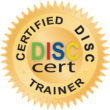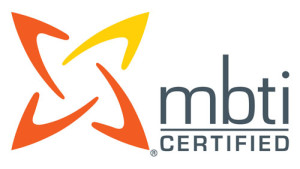Managing cash flow effectively is crucial for sustaining and expanding a business. Without adequate cash flow, even profitable businesses can struggle to cover day-to-day expenses and seize new growth opportunities. A strong cash flow ensures operational stability, helps manage financial obligations, and supports long-term expansion. Here’s how you can improve cash flow and drive business growth efficiently.
1. Monitor and Track Cash Flow Regularly
One of the most effective ways to improve cash flow is by keeping a close eye on income and expenses. Regularly reviewing financial statements, cash flow reports, and bank balances helps identify potential issues before they become major problems. Use accounting software or financial management tools to automate tracking and generate real-time insights into your cash position.
2. Optimize Invoicing and Payment Processes
Late payments from customers can severely impact cash flow. To speed up collections:
- Set clear payment terms with shorter deadlines (e.g., Net 15 instead of Net 30).
- Offer discounts for early payments to encourage timely settlements.
- Automate invoicing and send reminders to customers before due dates.
- Consider requesting partial upfront payments for large orders or projects.
By streamlining the invoicing process, you can reduce delays and maintain a steady cash inflow.
3. Reduce Unnecessary Expenses
Cutting unnecessary costs helps improve cash flow without affecting business operations. Regularly assess expenses and eliminate those that don’t contribute to revenue generation or efficiency. Some cost-cutting strategies include:
- Negotiating better deals with suppliers.
- Switching to more cost-effective software or services.
- Outsourcing non-core business functions to reduce overhead costs.
By identifying and eliminating wasteful expenditures, you can free up capital for business growth.
4. Improve Inventory Management
For businesses that rely on physical inventory, excessive stock can tie up cash and lead to inefficiencies. To optimize inventory:
- Analyze sales data to forecast demand accurately.
- Implement just-in-time (JIT) inventory strategies to minimize storage costs.
- Sell off slow-moving or excess stock at discounts to free up cash.
Effective inventory management ensures that you have the right amount of stock without holding excessive capital in unsold goods.
5. Secure Flexible Financing Options
Having access to flexible financing can help businesses manage cash flow gaps and invest in growth. Options include:
- Business lines of credit for short-term cash flow needs.
- Invoice financing to get immediate funds from outstanding invoices.
- Business loans to fund expansion without straining daily operations.
Exploring different financing solutions can provide the necessary cash to fuel growth initiatives.
6. Diversify Revenue Streams
Relying on a single source of revenue can be risky, especially during market downturns. Diversify your income sources by:
- Introducing new products or services.
- Expanding to new markets or customer segments.
- Offering subscription-based models for recurring revenue.
- Leveraging digital marketing strategies such as PPC for lawyers to attract high-value clients and generate steady income.
A well-rounded revenue strategy helps stabilize cash flow and protects the business from economic fluctuations.
7. Leverage Offshore Financial Strategies
For businesses looking to enhance financial stability and expand globally, offshore financial structures can provide benefits such as asset protection, tax efficiency, and greater financial flexibility. Utilizing an offshore trust formation & trustee service can help businesses manage their assets strategically while ensuring long-term financial security. These structures offer protection against economic uncertainties and provide a reliable foundation for future growth.
8. Build an Emergency Cash Reserve
Having an emergency fund ensures that unexpected expenses or economic downturns don’t cripple your business. Set aside a portion of profits into a dedicated reserve account to cover at least three to six months’ worth of operating expenses. This financial cushion allows your business to navigate challenges without relying on expensive short-term loans.
Improving cash flow is key to sustaining and growing a business. By optimizing payment processes, cutting unnecessary costs, managing inventory effectively, and exploring financial strategies such as offshore trusts, you can strengthen your company’s financial position. A well-managed cash flow not only supports daily operations but also fuels long-term business growth and expansion. Implement these strategies today to ensure a financially stable and thriving business.



